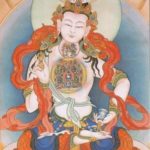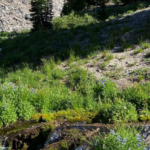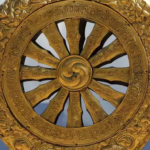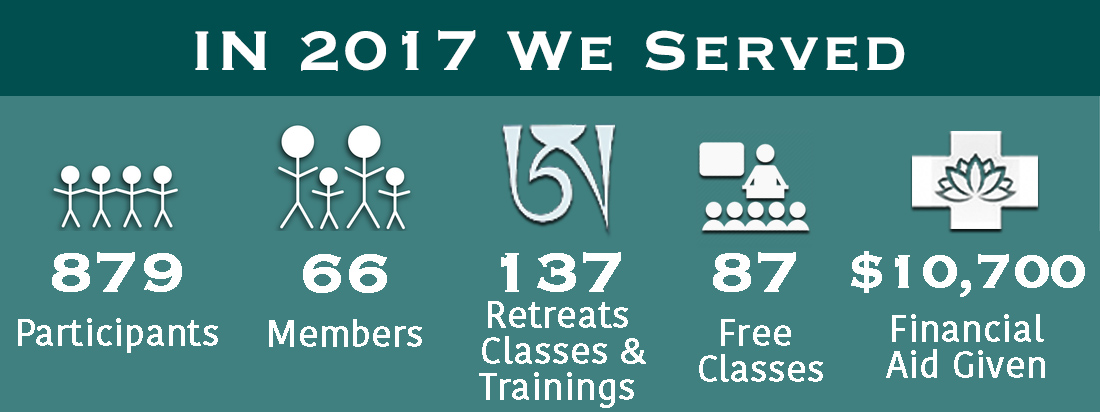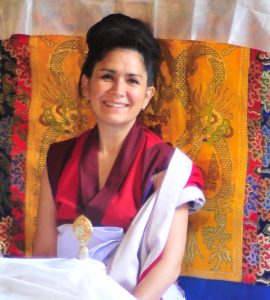 When I was talking to a Yogi in Eastern Tibet, telling him about our organization, he had a reaction that I will always remember. The conversation happened when we were walking around a stupa together at Dzogchen monastery, in Eastern Tibet. That stupa has been made to look exactly like the one in Boudha, Nepal, one known for fulfilling wishes that are made there by the faithful. I shared with him my vision of Ngakpa International as an organization dedicated to the education of Buddhist Yogis in the East and West.
When I was talking to a Yogi in Eastern Tibet, telling him about our organization, he had a reaction that I will always remember. The conversation happened when we were walking around a stupa together at Dzogchen monastery, in Eastern Tibet. That stupa has been made to look exactly like the one in Boudha, Nepal, one known for fulfilling wishes that are made there by the faithful. I shared with him my vision of Ngakpa International as an organization dedicated to the education of Buddhist Yogis in the East and West.
There was this strange feeling I had while explaining to him the pitch I had given many thousands of times – the importance of preserving Tibetan microcultures; the fact that efforts at sustaining Tibetan traditions have largely overlooked these smaller communities which carry an important part of local culture; the importance of sustaining practice outside mass institutions; the benefits of spiritual wisdom integrated with families and society; the importance of spreading information about the Ngakpas – the Tibetan Yogis so that we can have a fuller understand of Tibetan history and culture. Of course, explaining this to people in North America is one thing, but here I was explaining this to someone who didn’t know me at all, a Tibetan ngakpa whom I had never met before, in the Tibetan language on Tibetan ground. It’s hard to describe the scope of what we do to someone I have never met before. I can tell I usually fail at it, because sometime later, there’s usually this moment of shock when they realize the extent of what I was talking about!
I have met with many Ngakpas around the world, in India, Nepal, Tibet and many great Lamas. But this was not a high lama. This was not someone famous. He had never heard of me nor our organization before. He was just a man on pilgrimage I ran into. He was someone who had been moved by the Buddhist vision of life, stopped cutting his hair, did ngondro (the preliminary practices) and was now getting teachings from a Lama from North-Eastern Tibet whom I had traveled with.
In some ways, he was just like the many Vajrayana practitioners I meet in the West, except one. He was illiterate. Working and living in the old traditional occupation of a Tibetan nomad, he had been able to survive without reading and writing. When it came to Buddhist study, he relied entirely on oral tradition.
It’s a problem plaguing these communities – a lack of education or higher education that is not paid for by their government or is not available in their native language. There are people who have simply fallen through the cracks and remained outside new emerging systems and instead live a timeless life far outside the pace of modern culture, outside the protection and support of large monastic institutions. They carry on the Buddhist tradition in an important way, one that is simple, direct, outside global politics and sectarian competition. It is just a life of prayer, meditation and heartfelt practice of an old custom of Tibetan Yogis.
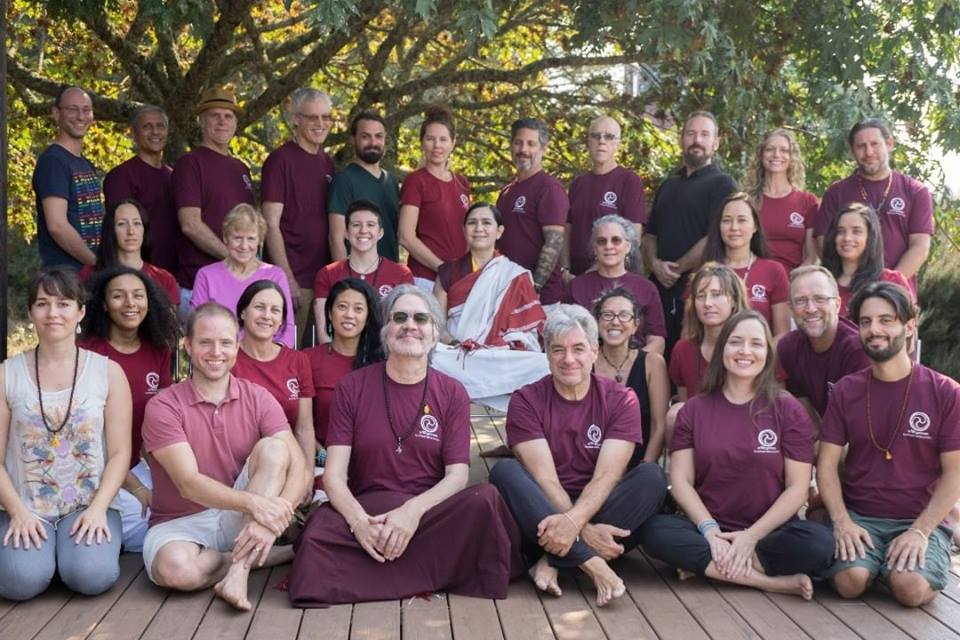 So, as we sat down together, we had come to the conversation about my non-profit organization Ngakpa International. I shared with him about what we were doing in America, the idea of making in-depth shedra style, drupdra, and gomdra education available and accessible to householders so they could participate in the full course of Buddhist tradition while remaining in the midst of their lives. These terms shedra, drupdra and gomdra, represent the three main courses of serious Tibetan Buddhist training, the intellectual, tantric and meditative training. I shared with him that my vision was that practitioners would not only do this study and these practices themselves but also support the continuation of these traditions among Tibetan Yogis in the East, as well as sponsoring the secular education of Tibetan Yogis. We have fulfilled this vision one year at a time, alternating between our own projects locally and our fundraising for projects abroad. I told him about the orphans we had sponsored and the ngakpa children’s education we had sponsored throughout the Himalayas. I showed him pictures of our sangha’s retreats and our residential centers. I told him about our clinic.
So, as we sat down together, we had come to the conversation about my non-profit organization Ngakpa International. I shared with him about what we were doing in America, the idea of making in-depth shedra style, drupdra, and gomdra education available and accessible to householders so they could participate in the full course of Buddhist tradition while remaining in the midst of their lives. These terms shedra, drupdra and gomdra, represent the three main courses of serious Tibetan Buddhist training, the intellectual, tantric and meditative training. I shared with him that my vision was that practitioners would not only do this study and these practices themselves but also support the continuation of these traditions among Tibetan Yogis in the East, as well as sponsoring the secular education of Tibetan Yogis. We have fulfilled this vision one year at a time, alternating between our own projects locally and our fundraising for projects abroad. I told him about the orphans we had sponsored and the ngakpa children’s education we had sponsored throughout the Himalayas. I showed him pictures of our sangha’s retreats and our residential centers. I told him about our clinic.
His response startled me because it was so heartfelt. It was one of those rare moments in life where someone totally gets it – the hard work, the bravery, commitment, the dedication that our sangha has had to engage in over the last two decades to accomplish this. We both knew that probably we would never meet again. He doesn’t even have a cell phone account or an email, nor could we write letters. So it was just one of those profound moments of heartfelt friendship among strangers. As we said goodbye, we both got very quiet and he looked me in the eye and said, with some intensity and urgency, “Khandro-la, don’t forget me.”
Well, I have not forgotten him. He is part of the matrix of images I hold in my mind that drive me on with this vision of the importance of education and the motivation behind Ngakpa International. And it is something I remember now as I write for our year-end fundraising appeal.
I founded Ngakpa International because I know that education is liberation.
Of course, education can mean many things. There is a famous quote from the Bodhicaryavatara that says,
The Buddhas neither wash ill deeds away with water
nor remove beings sufferings with their hands,
nor transfer their realizations to others.
Beings are released through the teachings on reality.
To me, this is a message about the power of education, which from the smallest truths to the ultimate truths – empowers, inspires and liberates people. Such education has a greater power than washing away negative karma for others or “fixing” others or giving magical transmissions to others. True learning is something painstaking, demanding, at times uncomfortable. When it is real, its results are unmistakable. From literacy to critical thinking, to skills for respectful communication in the midst of conflict, to the higher education offered by Buddhism on matters of mind, learning to navigate with wisdom through one’s own emotions, the ability to dissipate body-mind tensions, discovering and sustaining confidence, resources for investigating the big questions of life, having mastery in the face of endless desire, preparation to face one’s own and others death and the practical tools for living a life of altruism, benevolence and compassion – from the smallest to the biggest – education is liberation.
This is what drove me to found our non-profit Ngakpa International, which is now run by a team of volunteers who are my students and friends. We know that education is liberation because we see it in our own lives and in the lives of those who we have sponsored. This work gives new meaning to the term ‘higher education.’ I appreciate this deeply about the Buddhist system of college training in which practical and spiritual education are combined. But such training is not necessarily accessible to everyone and as it turns out is not the way that most people today study Buddhism. But it’s not the first time that this has been the case. There is a long tradition of Buddhist education that has happened outside monasteries, from within work, society and family life. It is the tradition of Tibet’s Buddhist Yogis. And it’s a custom that has pressing relevance for people around the world today who do not meet Buddhism in monasteries, but in offices, on laptops, and in urban centers.
This is why I am deeply inspired by what happens outside the monasteries of Asia, in mountain caves, cremation grounds, local rituals and the Buddhist wisdom that is integrated into daily life. What is Buddhist learning for those who live in the world? Who have responsibilities to work and have family and live amongst ordinary society? How can we support such people to have maximum education, inspiration, and empowerment?
A stereotype of the Yogi tradition is that it is only ritual or magically based. Such stereotypes pervade because the world knows little about Tibetan Yogis and is really just starting to learn. But the stereotype does not actually hold true, all of Tibetan Buddhism is equally invested in ritual. And from what I have witnessed first hand, the oral tradition often passes on the same knowledge that is studied in monastic colleges, quite systematically, actually. The same topics of the Bodhicaryavatara and Kunzang Lama Shelung studied in shedras are elucidated one by one in these incredibly intimate encounters of a teacher passing on knowledge to a few students on mountainsides, just like in the legends. So, what is different seems to boil down to lifestyle. One is celibate and renunciate, one is non-celibate and yogic. What Yogis specialize in – is wakeful presence in the phenomenal world. May the tradition flourish long enough for that learning and transmission to take place to another generation! And may it flourish in its homelands as well as around the world.
Whatever appears and whatever arises,
all things that proliferate and abide
as dynamic expressions of awareness…
everything is of one of basic space like waves on water.
Phenomena are forever discerned within the context of the supreme secret,
and so it is in the nature of things that freedom comes about simply
through understanding this key point.
– Longchenpa (1)
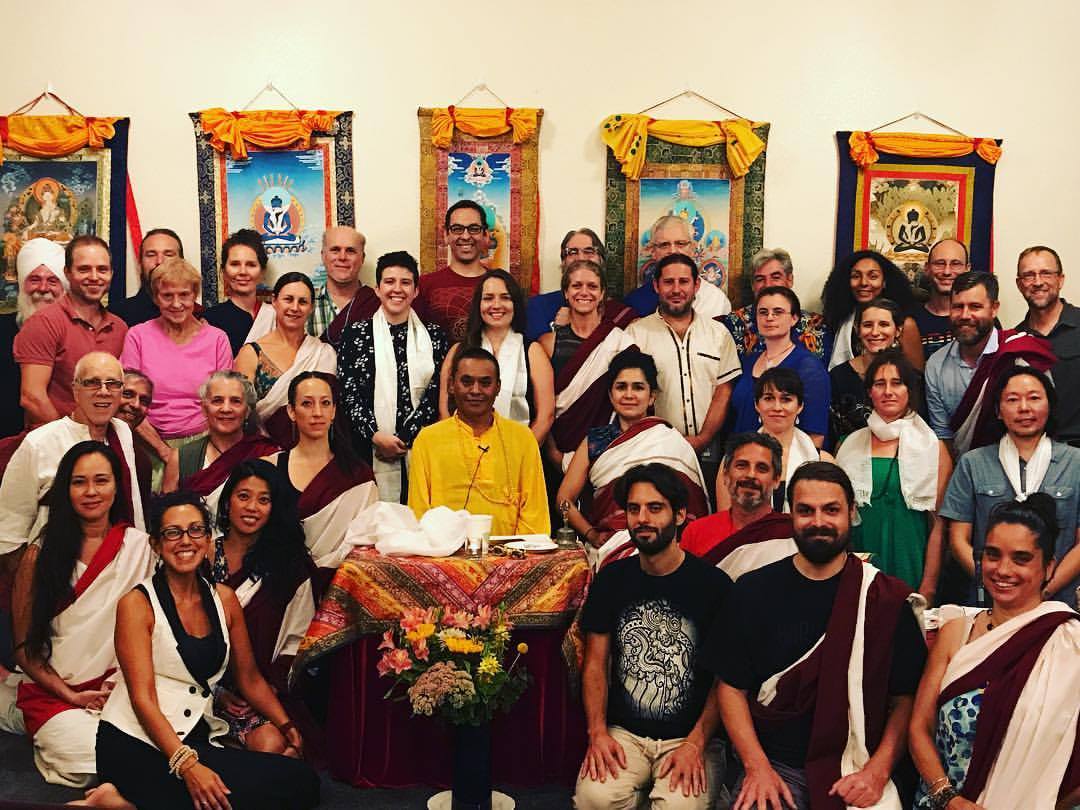
Our work at Ngakpa International is incredibly grassroots. We are not a huge organization, we are quite small, but we are strong. A small group of dedicated practitioners, learners, teachers and leaders who make small but consistent efforts at manifesting this vision together. We gather for retreats two or three times a year, but we also meet every week, once a week, on the phone to study texts, practice and dialogue together. This happens no matter where I am in the world because of my commitment and enthusiasm for offering ongoing Buddhist education, practice, and service. We are a network not only made of our own hard-core members but also of many friends who have met me or our teachers throughout the years, who join us occasionally and support us regularly. Together we make up this positive momentum to actualize goodness in this world, for ourselves and others, to extend generosity to our dharma friends in the East so we can give back in gratitude for the Yogis lifestyle we enjoy more and more in the West.
To accomplish all that we do, we rely on donations. Tuition for our programs covers only a fraction of our costs, it is really due to individual donations, small and large gifts, that we may keep going another day, another month or another year.
Last year I taught extensively. I taught for Daily Dharma Gathering, taught our weekly online classes, presented at the Sakyadhita International Buddhist Women’s conference, led our annual retreat and I was one of the teachers who led the Lion’s Roar Retreat. But this is just the tip of the iceberg. We accomplished so much together. Check it out!
And we are currently fundraising so that we can continue these activities and more in 2018.
This year has also been an excruciating one in so many ways in the US, where our three centers and multiple communities reside. We have seen the mainstreaming of hate-speech and we are living with its painful consequences. Not all the results of the difficulties this past year have been negative, there have also been major strides in raising awareness on behalf of women’s challenges and women’s rights. Suddenly, we are all finding ourselves living in a whole new world. So, as I raise awareness about our organization for our year-end fundraising, I would like to also point out one additional important aspect of our work that warrants your support. There is something that I hope to hear dharma organizations and Buddhists say a lot in the future: We are feminist. The men, women and non-binary people in our community, support the empowerment of women and re-examination of toxic gender scripts that cause suffering. And of course, I myself am a female teacher and public advocate for Buddhist women’s history and Buddhist women’s presence.
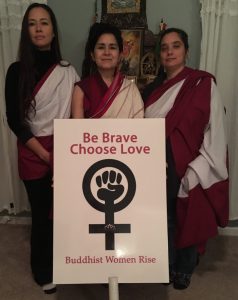 There have been many voices throughout Buddhist history on issues of gender, and like most issues, not all agreed. However, philosophically speaking, Buddhism and feminism are completely compatible because Buddhists believe that all persons are equal and lack any fixed essential self. It is a beautiful framework to view the spectrum of gender as a play and display rather than as implicit concrete binaries that should confine certain persons to greater hardships. But the reality is Buddhist women have faced greater hardships, as women have in every field and every religion all around the world have. So in addition to supporting our mission as Ngakpa International – promoting Buddhist wisdom in work, family and society – and promoting education as liberation, in addition to supporting our work in running our residential centers and support for the hundreds of ongoing classes that myself and my students teach every year, in addition to supporting our free classes and our clinic, in addition to supporting our humanitarian efforts abroad – I also ask for your year-end support as an opportunity to support a dharma organization that cares for feminist values and led by a female Buddhist teacher. May there be many more such organizations in the future.
There have been many voices throughout Buddhist history on issues of gender, and like most issues, not all agreed. However, philosophically speaking, Buddhism and feminism are completely compatible because Buddhists believe that all persons are equal and lack any fixed essential self. It is a beautiful framework to view the spectrum of gender as a play and display rather than as implicit concrete binaries that should confine certain persons to greater hardships. But the reality is Buddhist women have faced greater hardships, as women have in every field and every religion all around the world have. So in addition to supporting our mission as Ngakpa International – promoting Buddhist wisdom in work, family and society – and promoting education as liberation, in addition to supporting our work in running our residential centers and support for the hundreds of ongoing classes that myself and my students teach every year, in addition to supporting our free classes and our clinic, in addition to supporting our humanitarian efforts abroad – I also ask for your year-end support as an opportunity to support a dharma organization that cares for feminist values and led by a female Buddhist teacher. May there be many more such organizations in the future.
Your friendship and support are what has allowed us to continue for all these years and in our this year-end fundraising drive, I ask for your continuing help to keep it going.
There are so many good causes doing year-end fundraising and I am so glad for all them, may the wishes of every being be completely fulfilled! May Buddhist Yogis, Monks, Nuns and lay people all flourish so we can know the diverse beauty of all forms of Tibetan Buddhism! May Buddhist education inside and outside institutions blossom! May education and literacy be available, affordable and accessible for all. Still, I also pass that Yogi’s request on to you. I also ask that you not to forget me, not to forget Tibetan Yogis and do not forget Ngakpa International in your year-end giving. Don’t forget us and if you can, please do express this support by making a donation to help us in our mission. Every donation is an encouragement for our work. Every donation, small or large, makes a significant difference. Every donation is put to use to make Ngakpa International’s mission a reality.
So I ask you to donate here now – better right now than later.
If you are not already, I also ask you to become a member, to keep your support coming on an ongoing basis and keep us connected directly.
And I ask you to join us as a volunteer, we are especially in need of video editing and online skills as we grow our online library. So in addition to donating, please do join us as volunteer, fellow learner, as a leader, supporter, and friend, or whatever way you might feel inspired – together let’s celebrate Buddhist wisdom in work, family, and society.
May our connection with one another bring true benefit and relief to the world.
Yours always,
PS
The good news is: we are a non-profit organization, your donations are tax-deductible! Yes!
Read about Ngakpa International Mission Here: Ngakpa International
Read more about Pema Khandro Here: Pema Khandro Bio
Find out Here: What are Tibetan Yogis?
Read about our Buddhist Yogis Sangha Membership Here: Membership
Follow Pema Khandro on Instagram here: Instagram with Pema Khandro
Read more about our fundraiser here: Fill the World with Wisdom and Love
Read about our curriculum of study and practice here: Curriculum
Read about our clinic here: Yogic Medicine Institute
Read about our Berkeley residential community here: Berkeley Buddhist Yogis
For ritual services, contact Gyaldak Rinpoche here: Gyaldak Rinpoche
Join an organization to support Buddhist Women Around the World here: Daughters of the Buddha
_________________________________________
Footnote:
Rabjam, Longchenpa. The Precious Treasury of the Way of Abiding. Padma Publishing, 1998. 15
